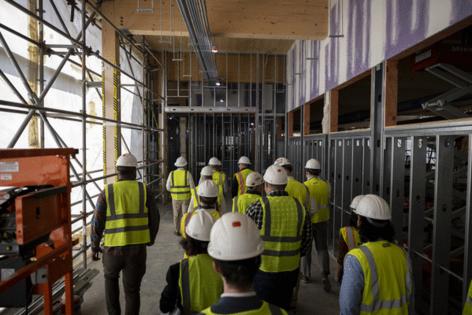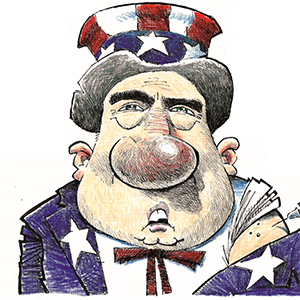Veterans could fill crucial holes in offshore wind workforce
Published in News & Features
Service members looking to leave the military could fill an important space in their workforce, according to offshore wind labor leaders and developers.
With more offshore wind units coming online over the next few years, more trade jobs will be necessary, according to a 2024 report from the Office of Energy Efficiency and Renewable Energy. The Department of Energy’s National Renewable Energy Laboratory found the wind energy industry will likely have a deficit of about 124,000 workers by 2030, and much of the disconnect will come from a lack of workers trained to do certain trades.
As part of this week’s offshore wind conference in Virginia Beach, several union leaders and transition workforce advocates came together to talk about what the veteran community could bring to the industry and what the industry can do for veterans.
Sultan Camp, director of the Hampton Roads Workforce Council’s veterans employment center, said veterans could help bridge that gap in skilled trade workers for offshore wind developers and their supply chain partners. The center helps thousands transition from military service to civilian jobs each year, and with positions such as nuclear engineers, high-voltage electricians and mechanics available for civilian and commercial work, Camp said there’s myriad options.
“You’ve got a really diverse pool of skill sets (in Hampton Roads),” said Camp, who is a Navy veteran.
Robert Schwartz, another Navy veteran and senior program manager of the nonprofit Helmets to Hardhats, said veterans also have skills outside of specific job training that could be beneficial.
“(Veterans) tend to look at things as mission-oriented,” Schwartz said. “Looking at projects and construction projects, it’s like you’re on a mission. Get the mission done. They’re also really good at understanding rank structure.
“With apprenticeship, the way it’s set up is you’re not in charge. You’re going to start as a ‘day one,’ then day two, but eventually you might be in charge and might be leading the way. I think the biggest thing that service members bring to the table is we’re trainable.”
But employers also have to step up to the plate, Camp said. He said the center focuses its work with employers around “The Four C’s” — candid conversations, commitment, community and code.
First, he said employers should have a candid conversation about why they want to hire veterans and whether they fit within their companies or projects. Next, he said companies have to be committed to supporting their veteran staff after they are hired. Employers must also engage with the military community as a whole and potentially advocate for legislation or code that continues to support military employees and their families.
“Being military friendly isn’t just a check mark in your marketing budget,” he said.
LS Greenlink USA broke ground Monday on its 750,000 square foot subsea cable facility, bringing hundreds of jobs into the region. Bill Wall, project director at LS Cable Systems America, said the building will create 300 to 400 construction jobs during development and 330 permanent jobs once the facility is built.
Wall said the company now has a V3 certification, a state program that helps employers develop and implement successful long-term strategies to recruit, hire and retain Virginia veterans.
_______
©2025 The Virginian-Pilot. Visit at pilotonline.com. Distributed by Tribune Content Agency, LLC.







Comments